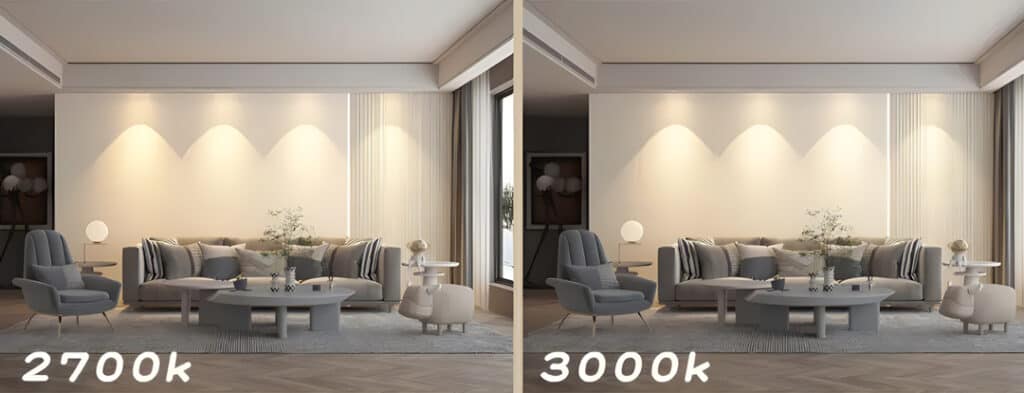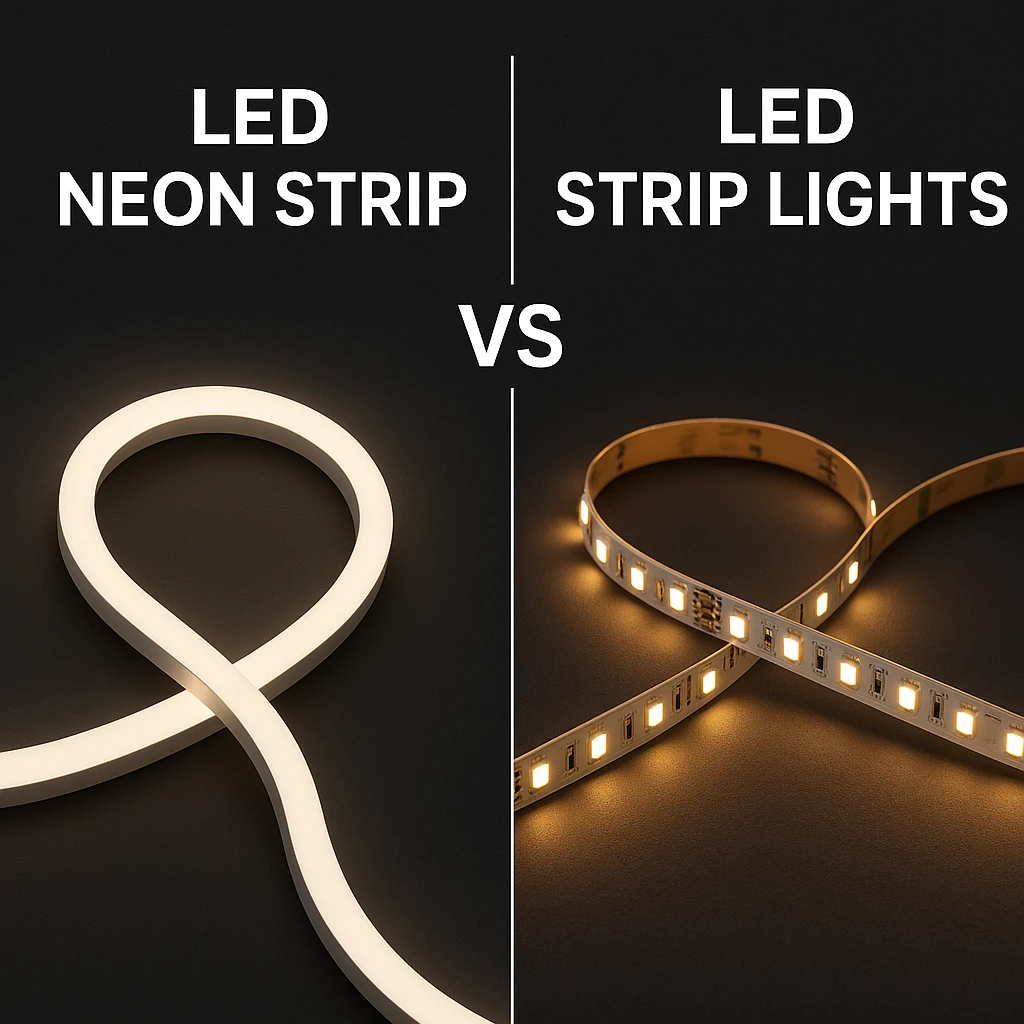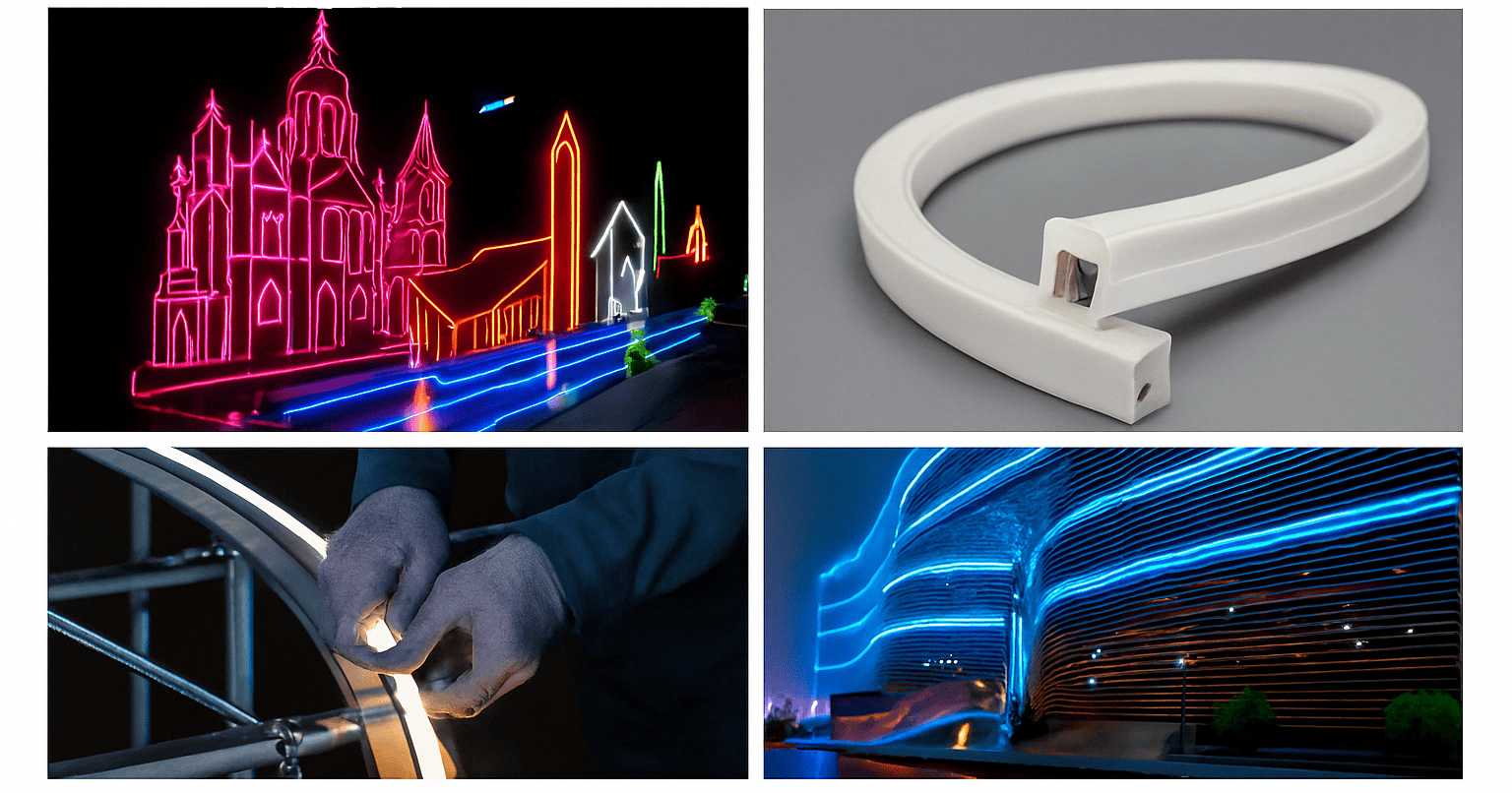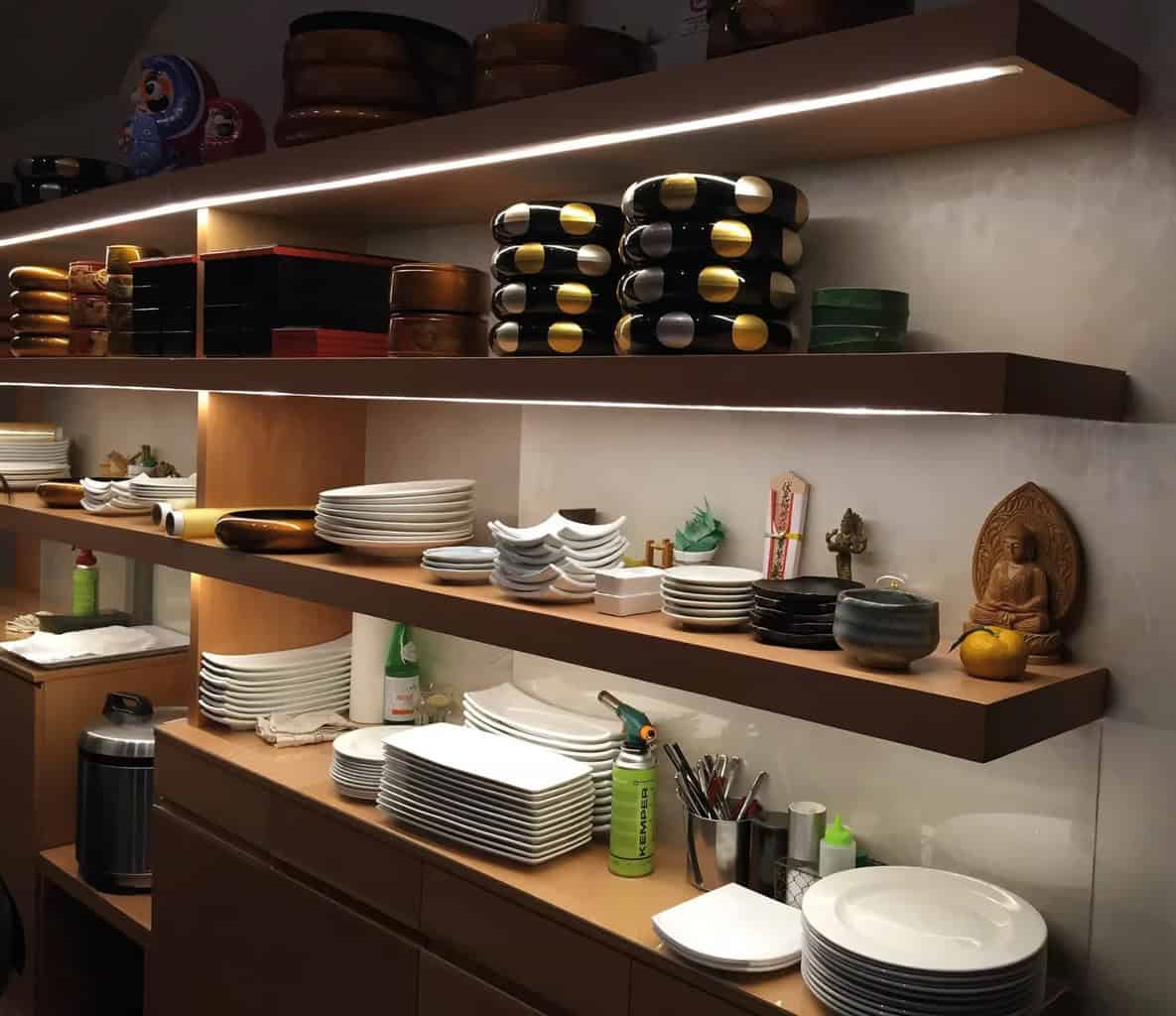What’s the difference between 2700K and 3000K lighting? You only want the best if you own a property. All of the design choices you make will have an impact. Your home lighting is one of the most significant decisions you will have to make.
Many homeowners don’t think much of lighting. It is sufficient as long as the home’s illumination is enough. However, the atmosphere of your room can be significantly impacted if you employ the wrong lighting in some places of your house. Every room’s lighting establishes a mood fit for its intended use.
For this reason, selecting the ideal color temperature for a given application is crucial.
Is the color temperature 2700K or 3000K?
The color temperature is expressed in Kelvin (K). This gauges the lamp’s brightness. It falls between 1000 and 10,000K. The brightness of the light from the bulb increases with a greater Kelvin rating.
We are interested in examining 2700K and 3000K color temperatures for our purposes. Most people agree that both have a warm white hue. The two color temperatures do, however, differ noticeably in terms of color. Which one works best for the various spaces in your house will depend on these distinctions.
2700K
Think about a conventional lightbulb. When it becomes too heated, a filament inside of it glows. It reaches a temperature of about 2700 degrees Kelvin, or 2700K, when it is at its brightest.
So, the color of the light your bulb generates will be the same as an incandescent bulb if it has a color temperature rating of 2700K. Use a bulb with a color temperature of 2700K if you enjoy this color.
However, the color of light produced by incandescent lights bothers some people. Many areas in your home will be better illuminated by a high color temperature. The 2700K bulb is disliked by most people due to its yellow or orange appearance. Things appear yellow in this rendering.
3000K
The light from 3000K is marginally purer than that from 2700K. It has a neutral white tone. For a more polished appearance, there are fewer tones of orange or yellow. You may be aware that 3000K is the hue of light emitted by halogen lights.
3000K bulbs are the ideal option if you like a slightly better color or don’t like the color of incandescent bulbs. The 3000K lighting’s whites aren’t overly blue, harsh, or chilly. It is the color temperature of warm white.

What distinguishes the 2700K from the 3000K?
Although there are some variances between the 2700K and 3000K bulbs, they are not very noticeable. It’s simple to perceive the difference between these two bulbs when you place them side by side. However, you won’t be able to tell the difference if they are apart, say two in separate rooms. Your 2700K and 3000K lights can easily blend in well together in the same area if they are not near to each other.
Therefore, you may still use a 3000K light in the same space for an under-cabinet light or a countertop light if you’re already utilizing a 2700K light for ambient lighting in your kitchen. You will still have a unified appearance.
You’ll see that there’s only a 300K difference between the two. The distinction between them is difficult to describe. While some are able to discern this change, others hardly perceive it at all. Each person experiences the difference differently. Seeing the lights in person is the greatest method to truly grasp which lighting option is preferable if you’re having trouble deciding between the two.
Concerning their distinctions, the quantity of blue light that each type emits is a further point of concern. The effects of blue light on human health have made people increasingly concerned about it these days. Melatonin, the hormone that promotes sleep and relaxation, is thought to be suppressed by blue light. Sleep quality will be impacted if you are exposed to blue light for an extended period of time.
Generally speaking, 3000K bulbs have more blue light than 2700K bulbs. It will therefore probably keep you awake and focused. However, not much of a difference. This is incredibly minute.
What is the ideal color temperature for each room in your house?
Warm-toned lighting fixtures are perfect if you want to create a pleasant ambiance in your living area and bedroom. Warm white light is what 2700K and 3000K are both. Any of them will go well with earth tones and wood furnishings.
The 2700K and 3000K differ slightly, but the latter is more suited for high-traffic areas including living rooms, home offices, kitchens, baths, and corridors. There are more visual duties in these areas. Not coziness and comfort are the primary objectives. However, utilize 2700K lights in spaces like dining rooms and bedrooms where you feel more at ease.
Your living room’s lighting can be varied. Place lamps for reading or extra lighting, spotlights for showcasing artwork, and overhead lights for general illumination. You can also use lamps to assist prevent glare.
The ideal number of lamps for interior chandeliers and lampshades is 2700K. 3000k bulbs are recommended for spot and indirect lighting.
For kitchen illumination, 2700K and warm white bulbs are recommended. Your meal will look especially delicious whether it is cooked or served raw. However, employing 3000K lights is also ideal because most homeowners want to show off their kitchen to guests and use it as a workspace. This will assist balance the light coming in through the windows with the mood it provides.
Warm lighting works best for the dining area. For this, you can use 2700K or 3000K lights. In restaurants, having ideal lighting is crucial for fostering a welcoming atmosphere for your patrons to dine in. A 3000K light is the best option if you want your dining room to look warm and inviting.
Use soft white 2700K lights in the bedroom. With the warm, calming glow that this lamp emits, your surroundings will be quite peaceful. Your bedroom’s coziest aspect will be emphasized. You’ll enjoy reading and feel at ease when reclining in bed.
In your bathroom, you can also utilize 2700K and 3000K warm white lights. If the finishes in your bathroom are matte, beige, or natural stone, the 2700K lamp is perfect for you. In case the bathroom finish is glossy, gray, or dark, a 3000K light would be more appropriate.
Understanding the appearance of various color temperatures is crucial. This will assist you in selecting your ideal bathroom color. These are highly individual decisions. Most homeowners start with 2700K and 3000K lights since they are accustomed to them and find them to be quite comfortable. You’ll know what’s best for your home when you see these lights for yourself.
Once you are comfortable with the color temperature, you should think about how you and other people will utilize the restroom. The powder room has 2700K lights for guests who need to check their cosmetics or wash their hands. Three thousand kelvin lights might be added to the master bedroom bathroom to ensure excellent lighting for makeup.
The color temperature of outdoor lighting should also be extremely warm. The ideal one is a 2700K, although a 3000K will work as well. 2700K is incredibly calming; it casts a warm, inviting warmth on you akin to a campfire. It is therefore perfect for creating a calm and cozy outdoor atmosphere.
For architectural constructions, utilize the warmer 2700K color temperature if you intend to use both 2700K and 3000K outside. Use a slightly colder color temperature for lighting plants in a landscape. 3000K light is therefore ideal.
Due to their superior cooling over 2700K, 3000K lights are favored by many landscape experts. Highlights of blue and green in the foliage.
What is rendering of color?
The Color Rendering Index, or CRI, is used to quantify the accuracy with which colors are displayed in artificial lighting. The colors in the surroundings are represented more correctly if the CRI is nearer 100.
If a 2700K bulb seems overly yellow to you, it’s most likely the result of its CRI number rather than its color temperature. No matter the color temperature, items with a low CRI rating will appear washed out and dreary. Therefore, before purchasing a 2700K bulb, make sure to determine whether the CRI rating or the color temperature is the issue.
Alternatively, find out the CRI rating if you want greater color accuracy with 3000K lighting. Verify if the CRI value is high. Even if you might not have a yellow or orange tint, things illuminated by a 3000K light source with a low CRI value might not display their real color.
You have the option of using a 2700K or a 3000K in your house. One’s choice of color temperature is subjective. Everything is dependent upon the atmosphere you choose to establish.




